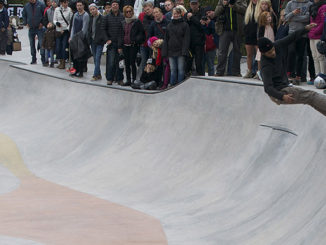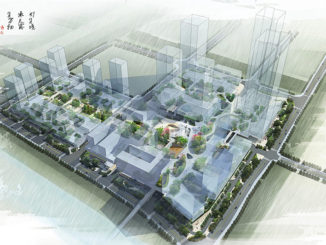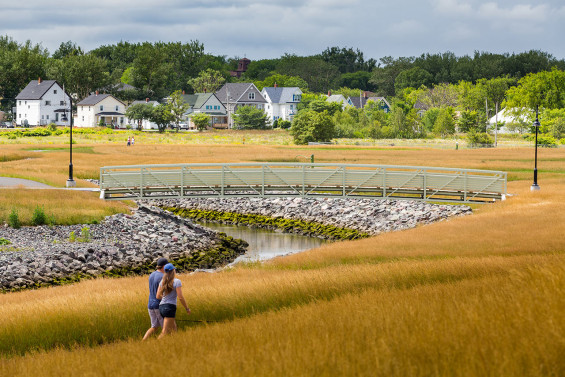
For nearly a century, the shores along Sydney Harbor bordered one of North America’s largest steel mills and coke ovens, making the steel industry an integral part of the region’s economy and culture. But when the plants closed in 2001, they left tons of industrial waste behind, creating a deep wound that divided three neighborhoods from their waterfront and from each other for nearly 13 years. With the community’s strong economic and emotional ties to the site, the landscape architects led a design effort that closed the divide, healed the environmental scar and boosted the community’s reputation and pride.
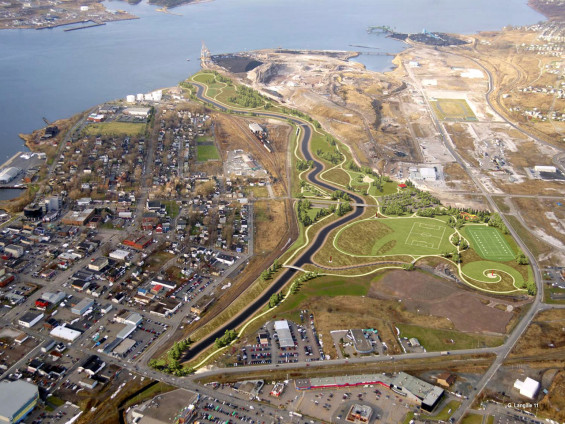
From the start, the design philosophy was three-fold: 1) restore the land to a healthy, natural state; 2) use that renewed space to reconnect a community that had long been fragmented; and 3) catalyze new development anchored by an active civic space. To do so, the landscape architects partnered with the community to develop a design plan that focused on:
- Transforming the landscape: From an entirely flat, level plain with standing pools of contaminated muck, we had to create the topography that provided variety, interest, beauty, and a rich mosaic of native vegetation. The one existing “landform” adjacent to the site is a massive mountain of slag – the byproduct of processing steel. Seeing that eyesore as an opportunity, the landscape architects figured a way to reuse the material, recycling a local, inexpensive, and safe product to create the very kind of landscape variety the design envisioned without adding excessive costs.
- Connectivity: Reconnecting residents to the land, the waterfront, and each other was paramount. Gateways to the park from nearby neighborhoods encourage and provide access, where 3.6 miles of multiuse paths and pedestrian bridges open up to scenic views of the harbor.
- Activity: The community was desperate for recreation space, sports fields, and open air event areas. The design incorporates them all, combining active spaces like athletic field complexes, bicycle and running training areas, and interactive playgrounds with more passive, less structured areas like naturalized open spaces and performance areas.
- History: This site is engrained in the community, from indigenous peoples to generations of families whose lives centered about the steel plant. The designers, therefore, took great care in developing an interpretive plan that embraces and reflects that history. Local artists were commissioned to advance the landscape architect’s concepts and add further intrigue to the dramatic landscape, and the design team searched for, salvaged, and integrated several relics from the site’s industrial past, from a transport ladle to a massive blast furnace cap that looks like an old tea kettle lid. These relics are familiar vestiges of the community’s past and create a timeline and subtle reminder of the site’s history and evolution.
- Natural beauty: Cape Breton is cherished for its natural beauty. The former tar ponds site, now reclaimed as Open Hearth Park, provides over 80 acres of native landscape whose ecological value will grow exponentially in the coming years.
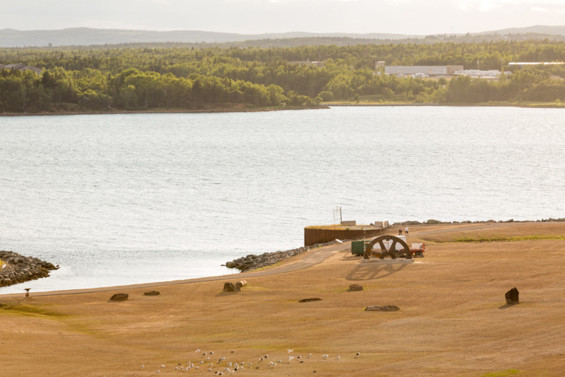
Environmental significance
With the incredible transformation of this formerly toxic site into an elegant, natural recreation area, its environmental significance can’t be over-stated. The landscape architects worked closely with remediation specialists to integrate the design plan with the practical realities of the site’s underlying layers. We negotiated the strict geotechnical requirements of designing atop a solidified layer of contaminated soil to ensure the foundations, utilities, and landforms would not compromise the structural integrity of those layers. Native plantings restored the site to a natural palette that also harmonized with the underlying remediation layers to help cap the soil, absorb water and nutrients, and colonize naturally. In addition, the design tapped into the nearly 9,000,000 cubic meters of slag abandoned nearby for park paths, roads, foundations, and landform, helping remove an unsightly eye sore as sustainably as possible.
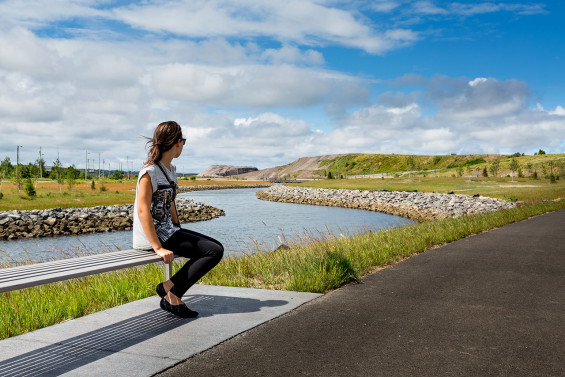
In addition to bringing the land back to health, the new park provides a layer of protection for the neighborhoods and businesses along the coast well beyond anything the former industrial site ever could have. With its expanses of wet meadow, this highly resilient landscape is perfectly suited to manage stormwater, providing a natural and wildlife-rich buffer that enhances the value – both aesthetically and financially – of the surrounding community.
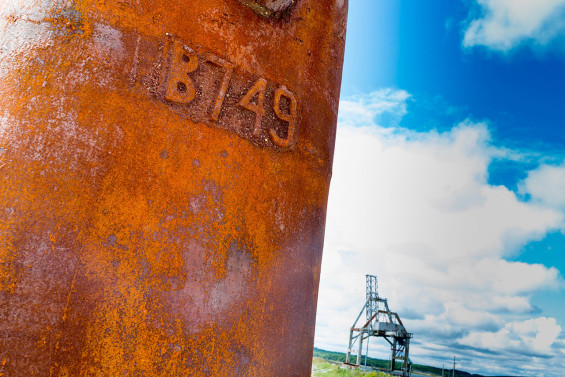
Collaboration
Perhaps the most important roles of the landscape architect in this remarkable renovation were managing the collaboration of the various disciplines needed to create a healthy, functional, and attractive natural asset and building trust with an enormously skeptical community. From soil scientists and hydrologists, to civil and structural engineers, to government officials and community stakeholders, the landscape architect brought the team together, working to ensure the design addressed their practical needs while also becoming the transformational natural and recreational resource the community desperately sought but never thought possible. Through public participation, landscape architects gained input from each neighboring community and conveyed concepts through design visuals and open dialogue.
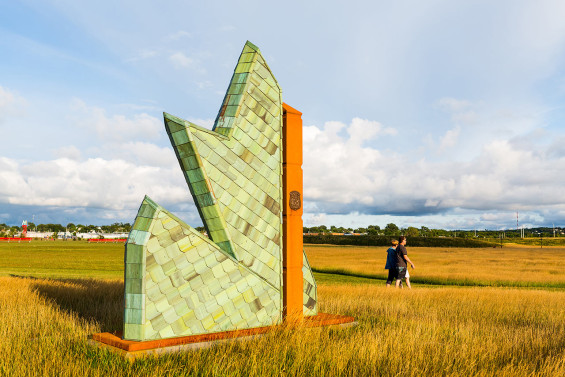
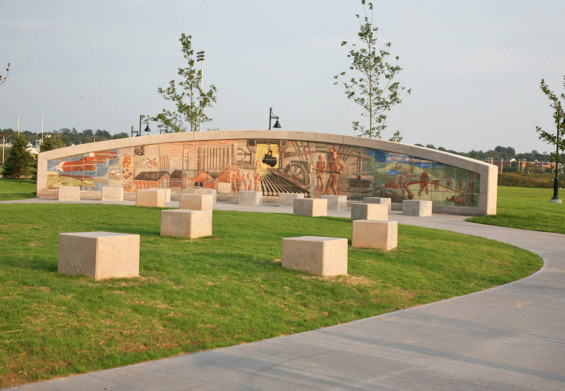
Long-term value
The value of this effort was apparent immediately, and will only continue to emerge with time. The park has reversed decades of negative associations with this site, provided much-needed community gathering spaces, created a platform for local artists and musicians, and literally buried safely the remnants of a contaminated past while honoring the part it played in shaping the community’s identity.
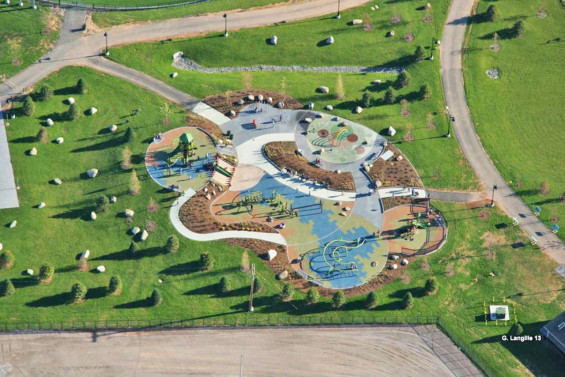
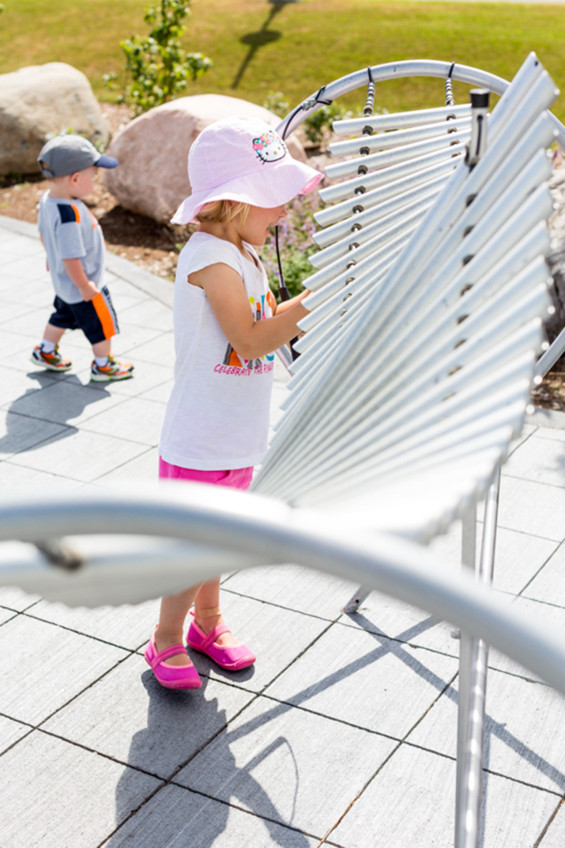
In what is now called Sydney’s own “Central Park,” the community has been able to host events as big as Capefest, which drew tens of thousands of visitors to see legendary rock band Aerosmith. But this park means more to its community than Central Park even does to New Yorkers. A steel mill was once their heart, and now a breathtaking park has taken its place and become a symbol of the community’s resiliency. A letter to the editor in the local paper sums up the meaning this transformation has had to its community: “We have a steel backbone and a coal-fired heart, and, as the song goes, we’re as proud as can be. The sky is always clear these days and the future looks bright.”
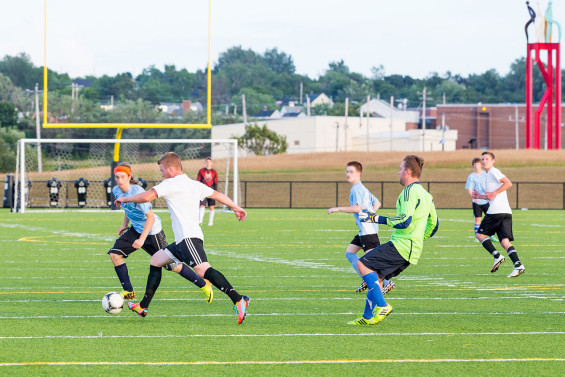
Open Hearth Park at the Former Sydney Tar Ponds
Location | Sydney, Nova Scotia
Design Firm | “Stantec Consulting Ltd.
– Gary Sorge, FASLA, CSLA, APALA – Principal in Charge
– Thomas Hammerberg, PLA – Landscape Architect
– David Nardone, PLA – Landscape Architect for Athletic Design
– Philip Champagne, Landscape Architecture Designer
– Jennifer Waldron, Landscape Architecture Designer
– Josh Atkinson, Project Landscape Architect
Vollick McKee Petersmann & Associates Ltd.
– Cary Vollick, Principal
Owner/Client | Sydney Tar Ponds Agency (STPA)
“Consultants:
(Architects, artists, engineers, contractors, etc.)” “Synthetic Turf: Challenger Industries, Inc. installed by Maritime Turf Supplies
Handrails | Laurentian Steel Fabricators Inc
Sports Lighting | MUSCO
Site Lighting | Philips Lumec
Furniture | Landscape Forms
Catch Basin Frame/Grate | I.M.P. Group LTD.
Decorative Fences | Nuvo Iron
Chain Link Fences | Eastern Fence Erectors
Traffic Bollards | TrafficGuard
Flag Pole | Ewing Flagpole Co. Inc.
Sports Equipment | Kwik Goal
Scoreboard: NEVCO, Inc
Play Equipment | Landscape Structures
Bleachers | Dant Clayton Corporation
Stone | Shaw Group
Splash Pad Equipment | Water Play Solutions Corporation
Seed Mixes | Maritime Turf Supplies installed by Sydney Landscaping and Nurseries Ltd.”
Image Credit | Julian Parkinson Photography

